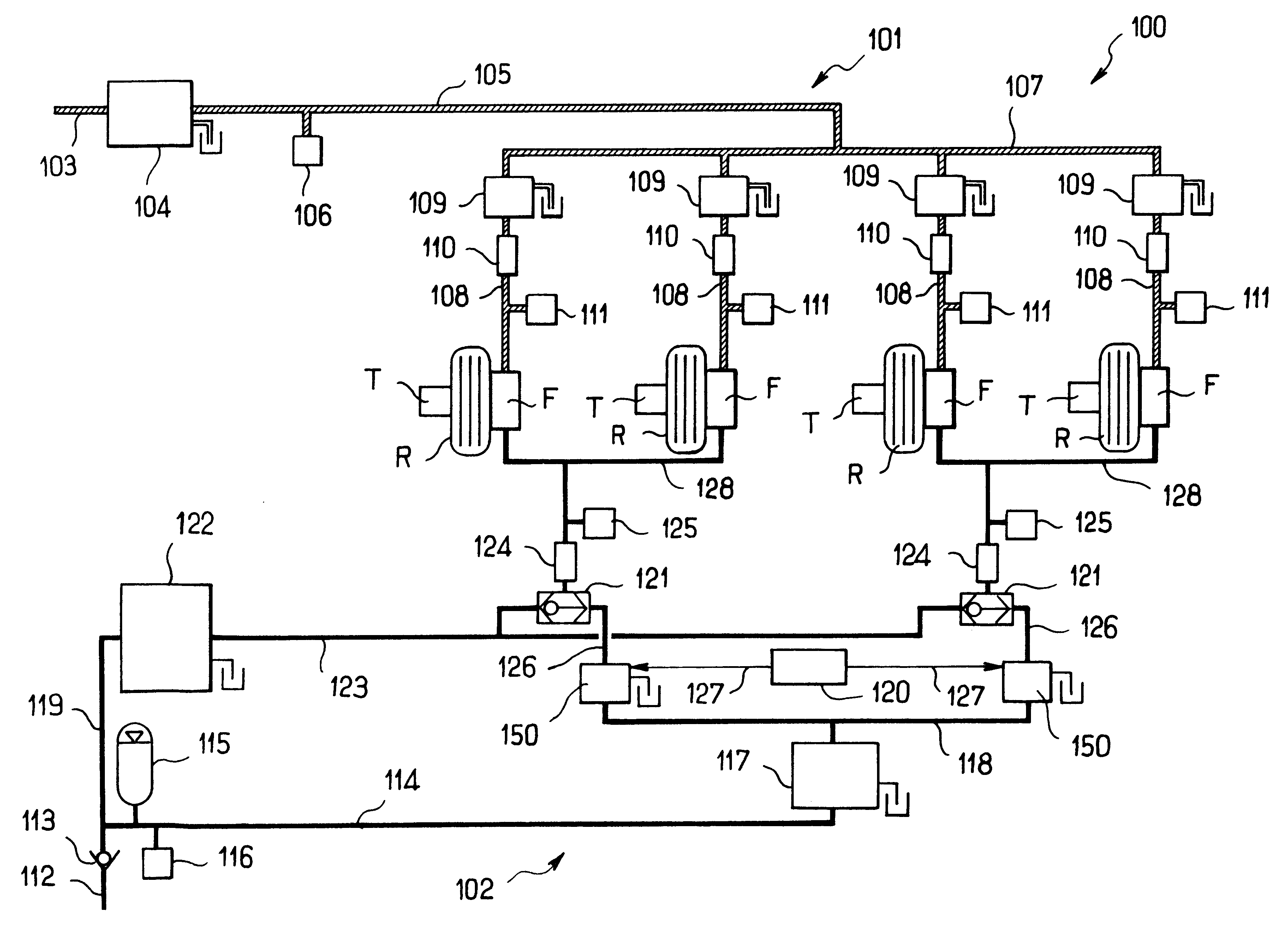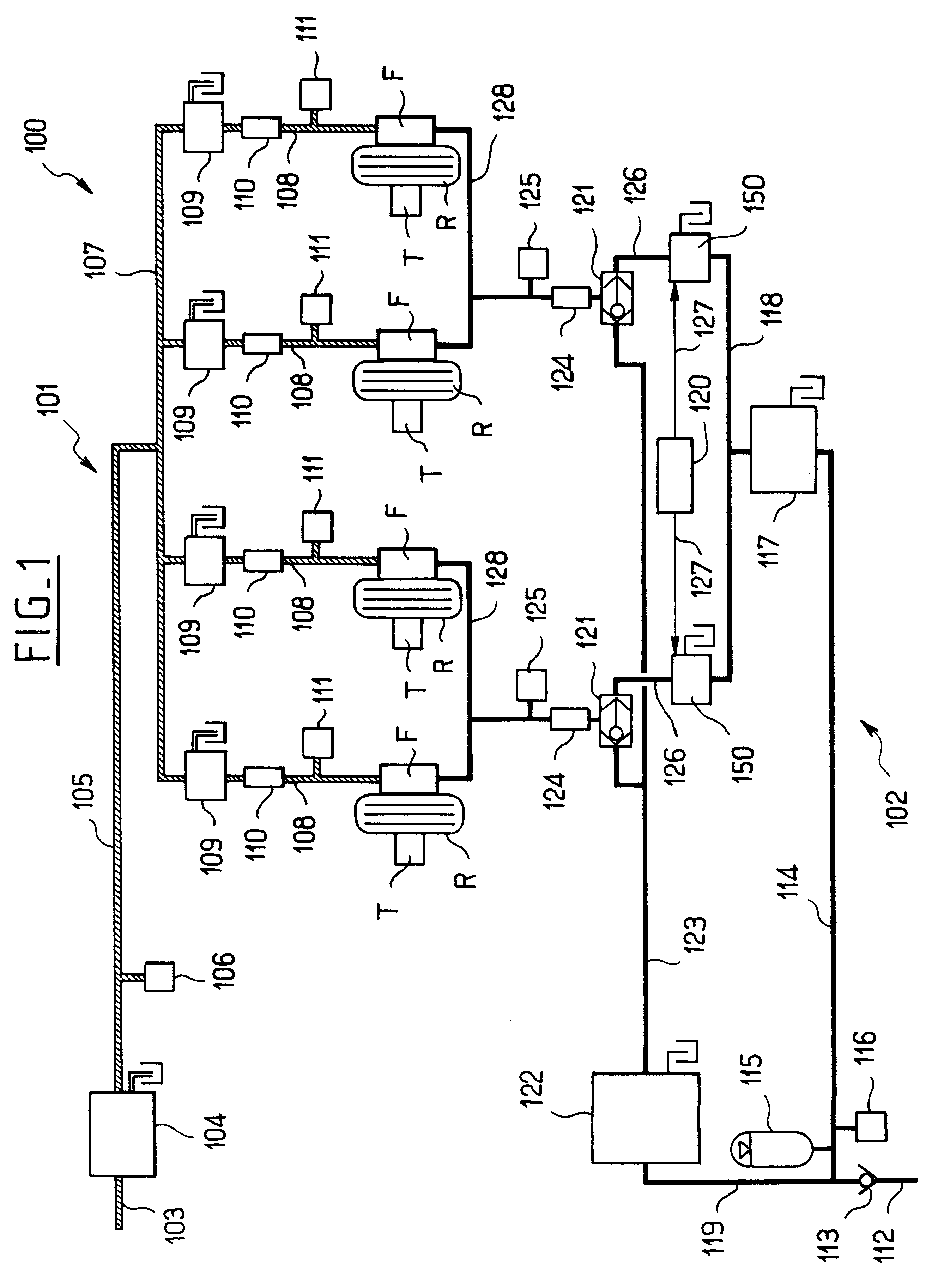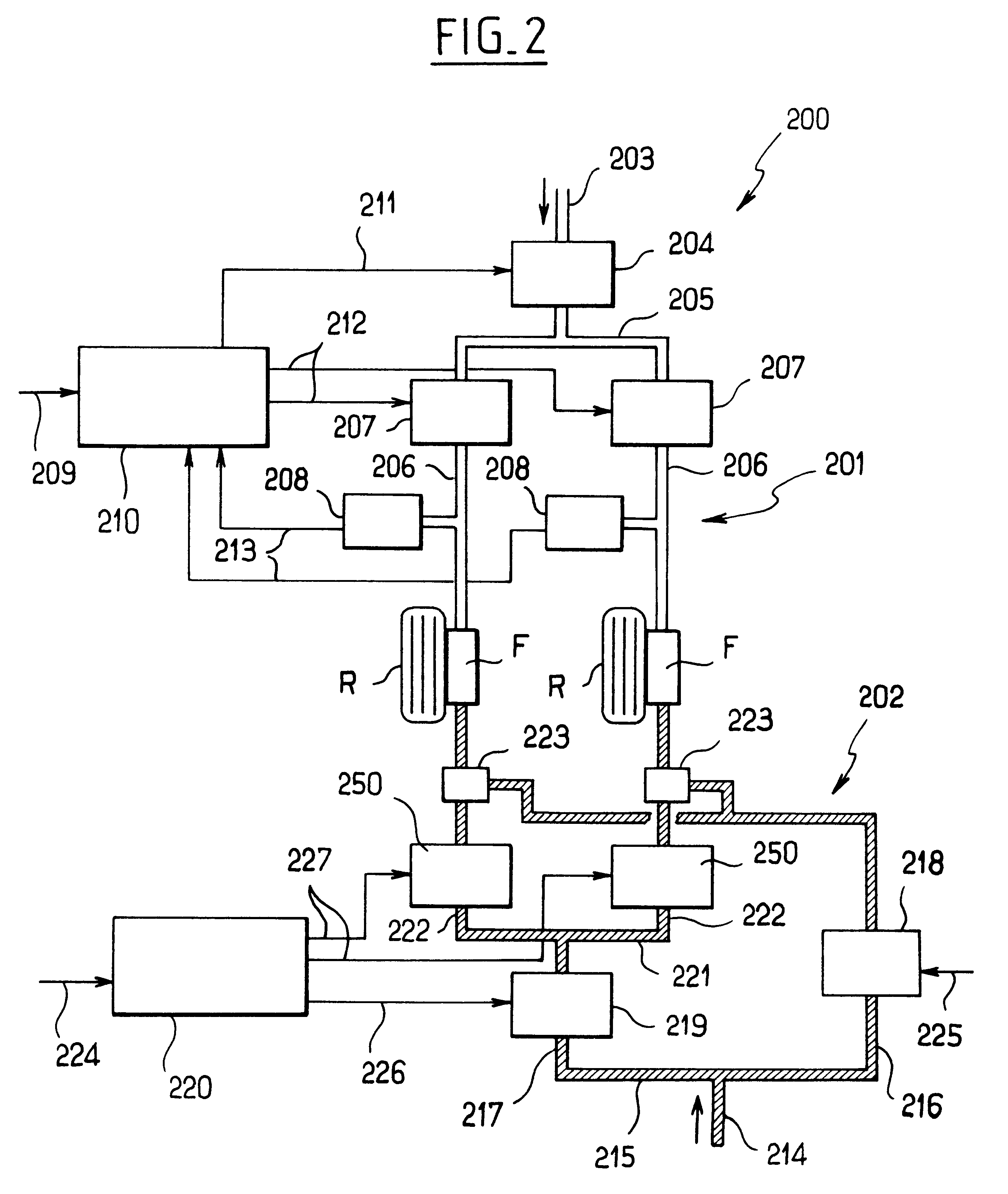Apparatus for braking a set of aircraft wheels
a technology for aircraft wheels and brakes, applied in the direction of aircraft braking arrangements, braking systems, braking components, etc., can solve the problems of operating pressure recovery, difficulty in using such servo-valves, operating pressure reduction, etc., and achieve accurate operation pressure and better performance.
- Summary
- Abstract
- Description
- Claims
- Application Information
AI Technical Summary
Benefits of technology
Problems solved by technology
Method used
Image
Examples
Embodiment Construction
FIG. 1 shows brake apparatus for a set of aircraft wheels, and by way of example there is shown a set comprising two pairs of wheels R, one pair being to the left and the other to the right of the aircraft. The brake of each wheel is marked F and is actuated using brake pedals that are not shown herein. It will be observed that in this case, each wheel is fitted with a tachometer T, each of which delivers information relating to the speed of the corresponding wheel to electronic control members.
The brake apparatus given overall reference 100 has two sources of pressure, each feeding a hydraulic circuit. Thus, there is a "normal" hydraulic circuit 101 and a "emergency" hydraulic circuit 102 for use in the event of a breakdown.
Specifically, the normal circuit 101 is organized in conventional manner, in particular concerning its brake servo-valves referenced 109, each associated with a respective wheel brake. The various components of this hydraulic circuit 101 are therefore outlined b...
PUM
 Login to View More
Login to View More Abstract
Description
Claims
Application Information
 Login to View More
Login to View More - R&D
- Intellectual Property
- Life Sciences
- Materials
- Tech Scout
- Unparalleled Data Quality
- Higher Quality Content
- 60% Fewer Hallucinations
Browse by: Latest US Patents, China's latest patents, Technical Efficacy Thesaurus, Application Domain, Technology Topic, Popular Technical Reports.
© 2025 PatSnap. All rights reserved.Legal|Privacy policy|Modern Slavery Act Transparency Statement|Sitemap|About US| Contact US: help@patsnap.com



